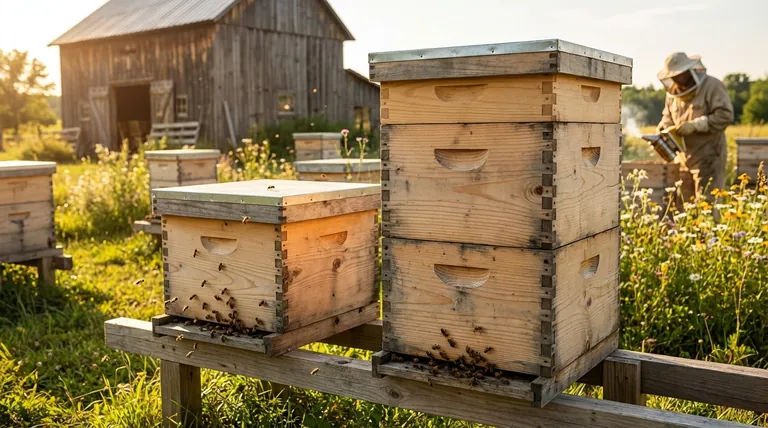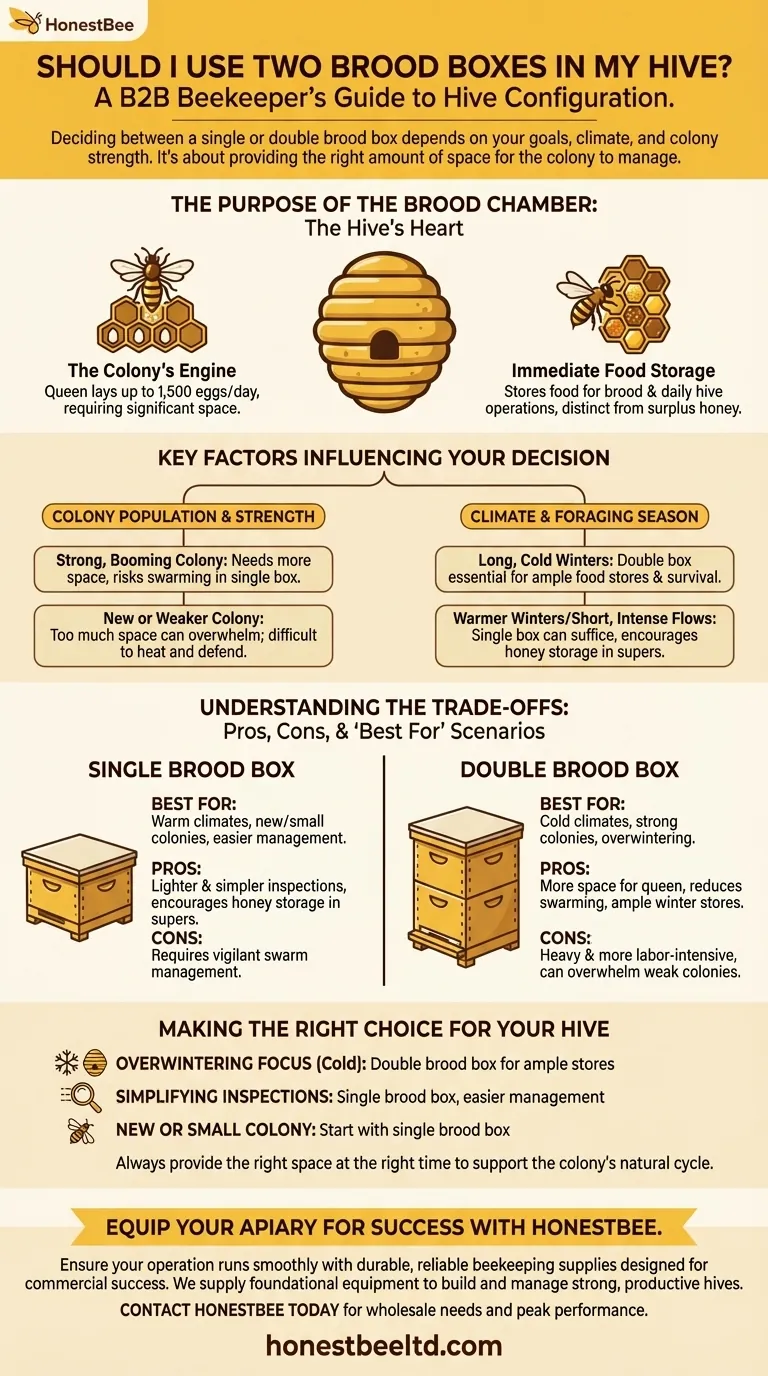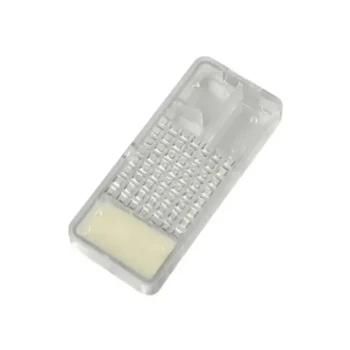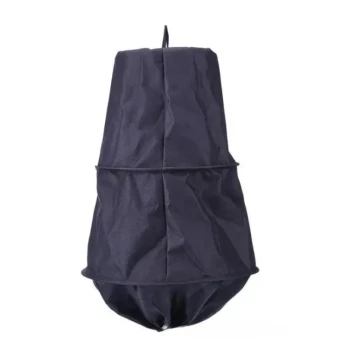Deciding on one versus two brood boxes is a fundamental question every beekeeper faces, and the right answer depends entirely on your specific goals, climate, and the strength of your colony. While a double brood box setup is a common standard, especially in colder regions, it is not a universal requirement. The key is to provide enough space for the queen to lay and the colony to store food without giving them more space than they can effectively manage.
The choice between a single or double brood box is not about which is "better," but which is more appropriate for your hive's current needs. A double brood box provides security and space for a large population, which is ideal for overwintering, while a single brood box can simplify management and potentially accelerate honey storage in the supers.

The Purpose of the Brood Chamber
To make an informed decision, you must first understand the role of the brood chamber. It is the heart of the colony, serving as both its nursery and its pantry.
The Colony's Engine
The queen lays her eggs in the cells of the brood chamber, creating the next generation of worker bees. A prolific queen can lay over 1,500 eggs per day, requiring significant space.
Immediate Food Storage
The frames in the brood box are also used to store pollen and nectar. This is the food the bees consume directly to raise brood and fuel the daily operations of the hive, distinct from the surplus honey stored in supers above.
Key Factors Influencing Your Decision
Your choice should be a direct response to a few critical variables. There is no one-size-fits-all answer; success comes from observing and reacting to your specific conditions.
Colony Population and Strength
A strong, booming colony quickly fills a single brood box. Without a second box, they will run out of space for the queen to lay and may begin preparations to swarm, which is how a colony reproduces.
Conversely, a new or weaker colony can be overwhelmed by too much space. A double brood box can be difficult for a small population to heat, defend from pests, and manage effectively.
Climate and Foraging Season
In regions with long, cold winters, a double brood box is often considered essential. It provides the necessary volume for the colony to store enough honey and pollen to survive the months when they cannot forage.
In areas with warmer winters or shorter, more intense nectar flows, a single brood box can be sufficient. The colony needs fewer winter stores, and a more compact brood area can encourage them to move surplus honey up into the honey supers more quickly.
Understanding the Trade-offs
Both single and double brood box configurations have distinct advantages and disadvantages. Your job as the beekeeper is to weigh these trade-offs against your goals.
The Case for a Single Brood Box
A single, or "one-box," hive is lighter and easier to manage. Inspections are faster because you don't have to lift a heavy upper brood box to check the lower one.
This configuration can also pressure the bees to store honey in the supers above, as space in the brood chamber is limited. However, it demands more vigilant swarm management from the beekeeper.
The Case for a Double Brood Box
This is often seen as a more "bee-friendly" approach. It gives a strong queen ample room to lay, creating a massive workforce for nectar collection. This larger population and space naturally reduces the colony's impulse to swarm.
The primary downsides are weight and labor. A full, deep brood box can weigh over 80 pounds, making inspections physically demanding. It also takes the colony more time and resources to draw out the wax and fill a second box before they begin working in the honey supers.
Making the Right Choice for Your Hive
Match your hive configuration to your primary objective for the season. You can always add or remove a box as the colony's needs change.
- If your primary focus is overwintering success in a cold climate: A double brood box setup is the standard and safest approach to ensure ample food stores.
- If your primary focus is simplifying inspections and lifting: A single brood box is significantly easier to manage, but requires closer monitoring for swarm preparations.
- If you are managing a new package or a small nucleus colony: Always start with a single brood box to avoid giving the bees more space than they can defend and keep warm.
Ultimately, successful beekeeping is about providing the right amount of space at the right time to support your colony's natural cycle.
Summary Table:
| Factor | Single Brood Box | Double Brood Box |
|---|---|---|
| Best For | Warm climates, new/small colonies, easier management | Cold climates, strong colonies, overwintering |
| Pros | Lighter, simpler inspections, encourages honey storage in supers | More space for queen, reduces swarming, ample winter stores |
| Cons | Requires vigilant swarm management | Heavy, more labor-intensive, can overwhelm weak colonies |
Equip Your Apiary for Success with HONESTBEE
Choosing the right hive configuration is just the beginning. Ensure your operation runs smoothly with durable, reliable beekeeping supplies designed for commercial success. HONESTBEE supplies beekeeping supplies and equipment to commercial apiaries and beekeeping equipment distributors through wholesale-focused operations.
We provide the foundational equipment you need to build and manage strong, productive hives, season after season.
Contact HONESTBEE today to discuss your wholesale needs and equip your beekeeping business for peak performance.
Visual Guide

Related Products
- Australian Langstroth Beehive Boxes for Beekeeping Wholesales
- Professional Insulated Plastic Bee Hives
- Portable Bee Mating Hive Boxes Mini Mating Nucs 8 Frames for Queen Rearing
- Langstroth Honey Bee Box Hive Boxes for Different Depths
- HONESTBEE Entrance Bee Feeder Professional Hive Nutrition Solution for Beekeeping
People Also Ask
- What is the purpose of reversing brood chambers in the spring? A Proactive Swarm Prevention Strategy
- What are the sizes of supers available in a standard hive? A Guide to Deep, Medium, and Shallow Boxes
- What are the three types of beehives? Find the Perfect Hive for Your Beekeeping Philosophy
- What color should beehives be painted? The Best Choice for Hive Health and Honey Production
- How many frames fit into a standard beehive box? Choose Between 8-Frame and 10-Frame Hives



















